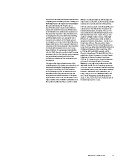Page 89 - Sotheby's October 3 2017 Chinese Art
P. 89
The motif of this finely painted vase derives from with the secondary European-style designs not
early Ming blue and white porcelain. Fruiting and only provide an attractive aesthetic but also firmly
flowering branches first appeared on underglaze- celebrate the imperial authority of Qing China.
blue porcelain during the Yongle reign, a
time when the potters at the imperial kilns in A closely related example in the Nanjing Museum
Jingdezhen achieved enormous developments is illustrated in The Official Kiln Porcelain of the
in the refinement of materials and expansion of Chinese Qing Dynasty, Shanghai, 2003, pl. 212;
the decorative repertoire. Blue and white vases one is published in Selected Masterpieces of the
of meiping form decorated with related fruiting Matsuoka Museum of Art, Tokyo, 1975, pl. 102;
and flowering branches are among the most another, sold twice in these rooms, 30th April
characteristic products of the Yongle period; 1991, lot 73, and 5th October 2011, lot 1920, is
for examples, see a vase in the Palace Museum, included in Sotheby’s Hong Kong - Twenty Years,
Beijing, illustrated in The Complete Collection of Hong Kong, 1993, pl. 166; one, sold in these
Treasures of the Palace Museum. Blue and White rooms, 20th May 1981, lot 764 and illustrated in
Porcelain with Underglazed Red, vol. 1, Hong Geng Baochang, Ming Qing ciqi jianding [Appraisal
Kong, 2000, pl. 30, and another offered in this of Ming and Qing porcelain], Hong Kong, 1993,
sale, lot 3620. Even the mottled cobalt ‘heaping p. 274, fig. 469; and a fifth example, sold at
and piling’ effect of the fifteenth century originals Christie’s Hong Kong, 27th April 1998, lot 724, is
was painstakingly reproduced by the Qing published in Julian Thompson, The Alan Chuang
craftsmen in a display of their proficiency over Collection of Chinese Porcelain, Hong Kong,
the pigment. 2009, pl. 36. A pair of vases, from the collection
of General Field Marshall Alfred, Count von
Like many other blue and white wares of the Waldersee, was sold in our London rooms, 12th
early Ming period, this design was reinvented and July 2006, lot 116. For the Yongzheng prototype,
transformed during the Yongzheng Emperor’s see a vase from the Grandidier collection and now
reign before becoming one of the favourites in the Musée Guimet, Paris, illustrated in Oriental
of the Qianlong Emperor. A new life has been Ceramics. The World’s Great Collections, vol. 7,
breathed into the Qing versions through the Tokyo, 1981, pl. 164. The similarity between the
hexagonal form and the inclusion of European- vases of the Yongzheng and Qianlong periods
style elements such as the scrolls on the corner suggests the present vase was produced early in
edges and the stems of flowers around the neck. the Qianlong Emperor’s reign.
The familiar traditional Chinese motifs coupled
IMPORTANT CHINESE ART 87

